minute read
August 11, 2022 | by PATTISON Outdoor Marketing
You don’t have to be an avid reader of glossy fashion magazines to know that brands—especially those in the fashion and beauty spaces—have historically relied on print formats to reach new and current consumers. When those publications migrated readers to the digital newsstand, fashion and beauty brands big and small followed along.
But as digital fatigue weaves itself increasingly into pandemic fatigue, many brands have begun to invest in areas outside of online advertising. Out-Of-Home formats have seen an especially pronounced resurgence in the last year—particularly those delivering contactless, seamless experiences that create lasting impressions. A prime example of this is transit advertising. With big-name brands like L’Oreal, Hugo Boss and Chanel investing in this format for the first time in recent history, more and more businesses are turning to large format transit vinyl as their new canvas for captivating, magazine-like ads.
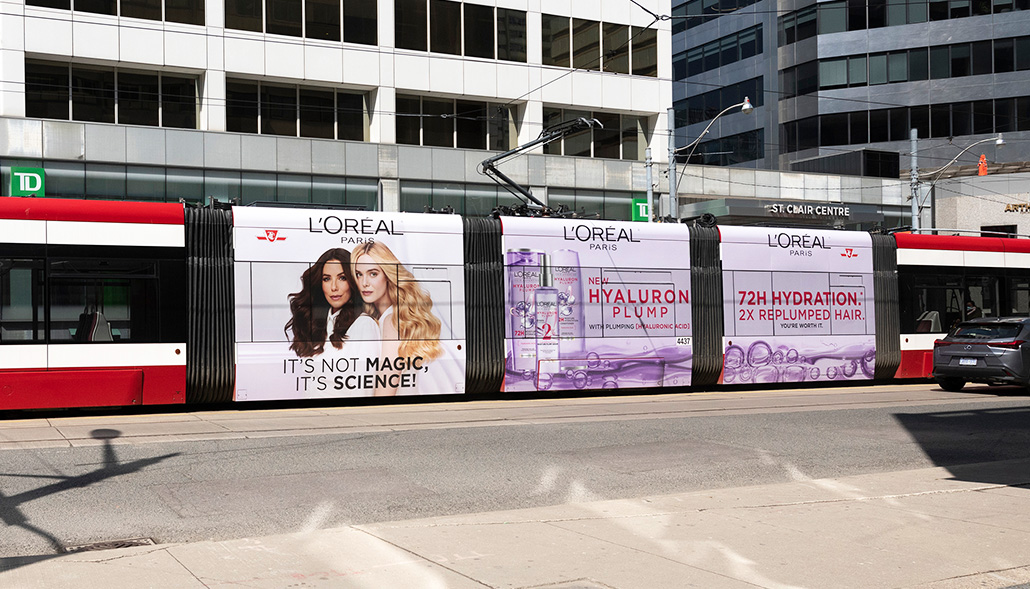
Transit advertising in Toronto: Vehicle wraps and murals
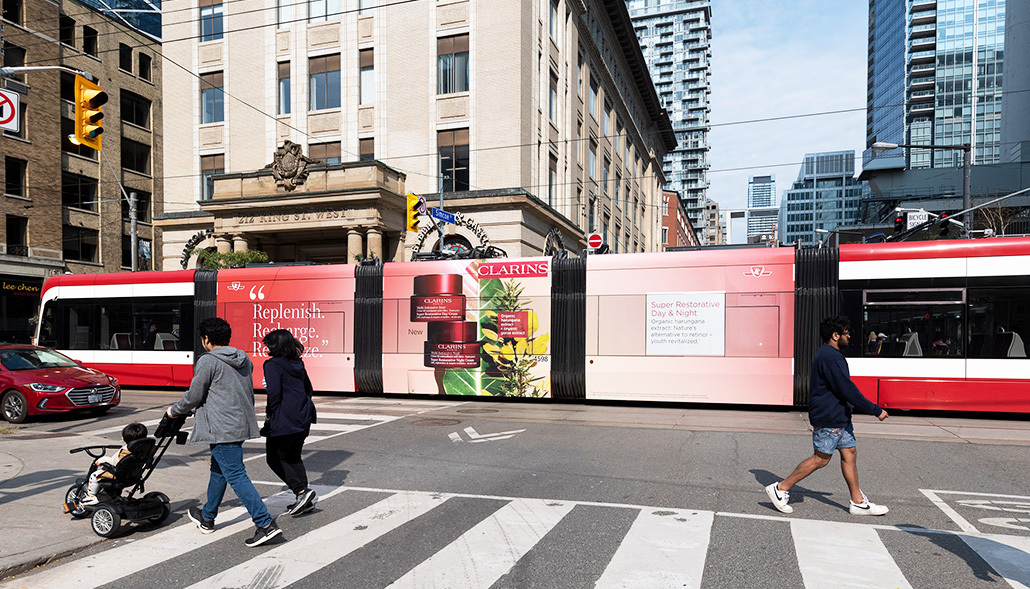
Consider an average commuter’s daily journey within a large urban area like Toronto. As they move around the city, they are likely to encounter many forms of transportation—including streetcars, subways, and LRT trains. This presents the perfect opportunity to capture the attention of key audiences. How? By using visually stunning full vehicle wraps and murals. Look no further than the Hugo Boss campaign (pictured below) as evidence of a high-end, modern canvas with the ability to cut through the downtown core of Canada’s most populous city.
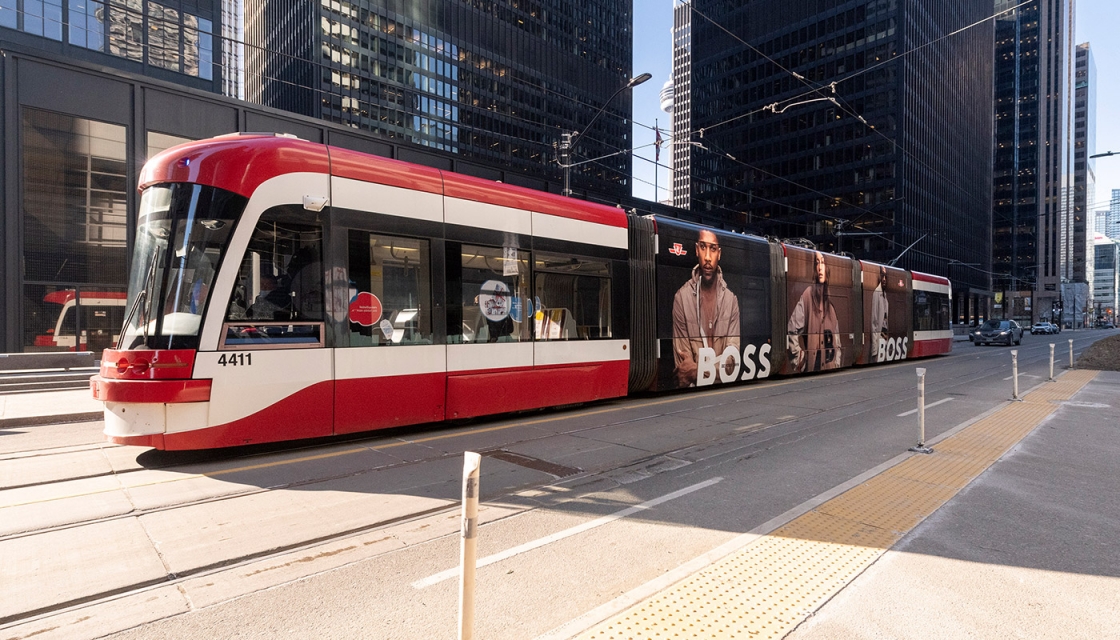
Not only are transit ads eye-catching, but they have the numbers to back them up. Businesses in industries from fashion to communications to food services and beyond are taking advantage of this opportunity to capture key markets in Toronto.
Let’s take Rivalry, the sports betting site and PATTISON client, as an example. Their transit campaign launched in Toronto in May of 2022. Nearly 1 in 5 of the city’s residents recalled seeing Rivalry streetcar domination, and among them 57% took action after seeing the campaign. Within that category, 22% ended up placing a bet, 17% visited the company’s website, and 11% created an account. As you can see, transit campaigns are making a quantifiable impact.
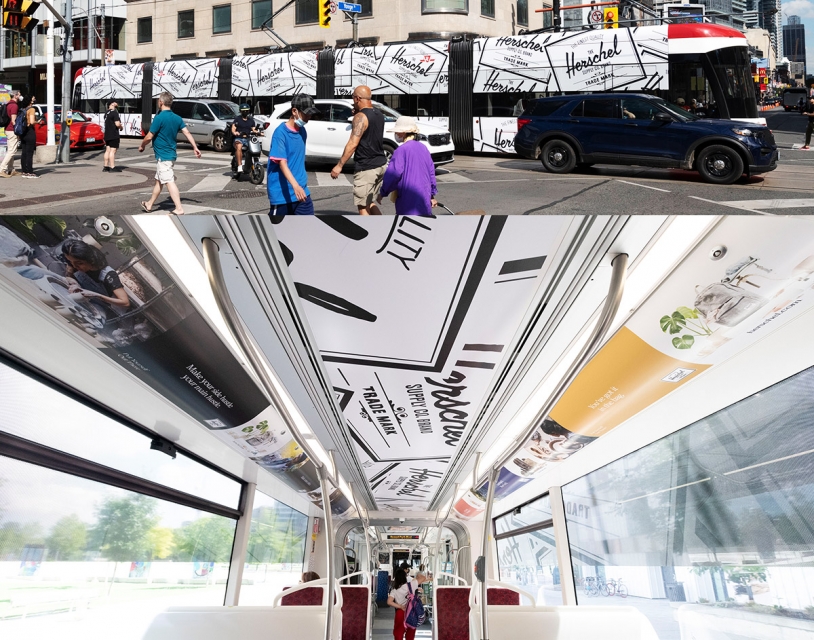
PATTISON Monthly Recall Tracker Study, n=402 interviews conducted within the Toronto among the General Population in May 2022 via Dynata online panel.
The food delivery giant Uber Eats—which experienced massive growth in the past few years—has also found success leveraging transit campaigns in Toronto. In their March 2021 campaign, over 1 in 4 Torontonians recalled seeing an Uber Eats transit ad. Not only that, but they resonated with key audiences, including TTC riders, work-from-home individuals, essential workers, and young adults between the ages of 18 and 34—all target demographics for Uber Eats. After viewing the campaign, a whopping 42% took action: 26% ordered from the app, 15% visited their website directly, 10% signed up to deliver with Uber Eats, and 8% downloaded the app. Evidently, transit advertising isn’t merely for fashion and beauty brands. The food delivery services category is seeing significant revenue coming directly from Out-Of-Home advertising.
Survey Methodology; n=420 Interviews conducted among the Toronto CMA General Population in March, 2021 via Dynata online panel.

Transit campaigns have Calgarians hungry for more
Toronto isn’t the only city to take advantage of this iconic method of advertising. Calgary’s residents are also taking notice of the imagery that’s criss-crossing their city on various forms of transit. One notable example of this is the Save-On-Foods transit campaign which launched in December 2021. Just under 40% of Calgary residents recalled seeing the campaign, and within this group 64% were weekly transit riders, 47% were regular commuters travelling 75km+ weekly, and 59% were 18-34 year olds. And the ads worked. After viewing Save-On-Foods’ transit campaign, 60% took action, with 18% ending up ordering online or planning to order online from saveonfoods.com. Now that’s some food for thought!
Survey Methodology; n=420 Interviews conducted among the Toronto CMA General Population in March, 2021 via Dynata online panel.
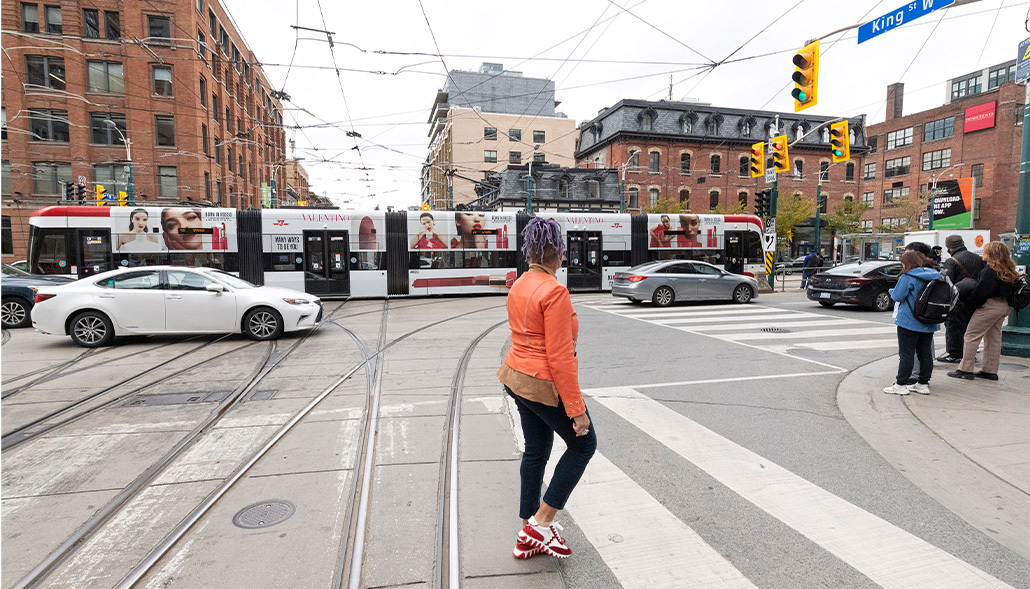
Bottom line? Don’t let transit advertising whizz past you
While Out-Of-Home might feel like a more traditional form of advertising, it goes hand-in-hand with modern life. Striking artwork from a mural or billboard is being increasingly shared on social media, giving brands a wider audience than ever before. Keep in mind that in order to stay ahead of the curve, you’ll need to think outside of the box and re-imagine the way you use traditional forms of advertising. Audiences are tired of endless streams of digital advertising, which have flooded their screens and no longer hold their attention. Perhaps what they seek is an impactful transit campaign that resonates as they resume the day-to-day life they enjoyed before the pandemic.
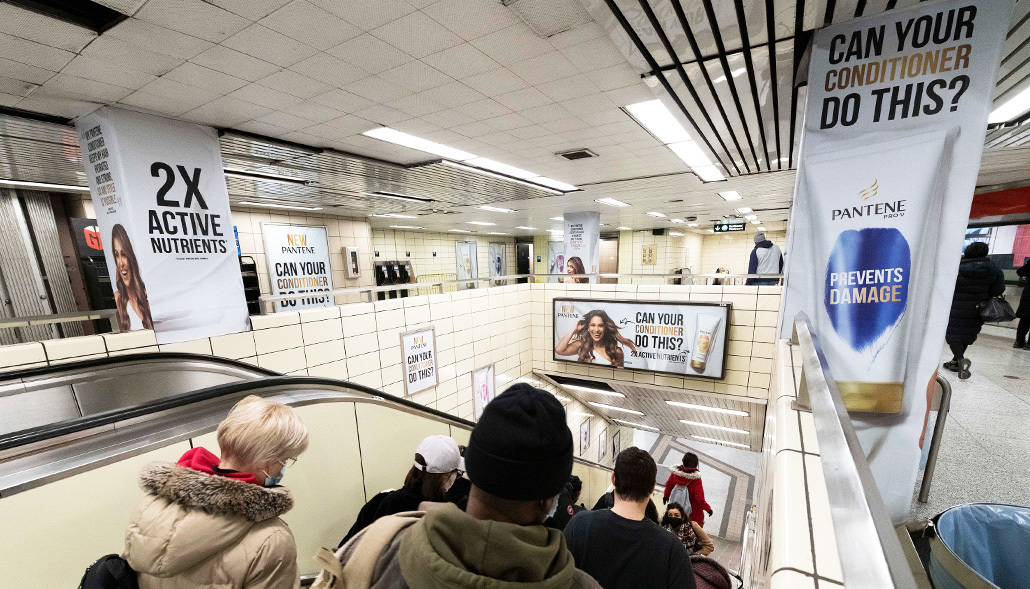

Powering Canada’s Out-of-Home advertising with 24,000 Out-of-Home displays across the country and counting,
we connect brands and businesses with Canadians in their local communities, at multiple touchpoints.
Reach out to us to find key Out-of-Home placements for your product or service in markets across Canada.

Powering Canada’s Out-of-Home advertising
with 24,000 Out-of-Home displays across
the country and counting,
we connect brands and businesses with Canadians in their
local communities, at multiple touchpoints.
Reach out to us to find key Out-of-Home placements for
your product or service in markets across Canada.
